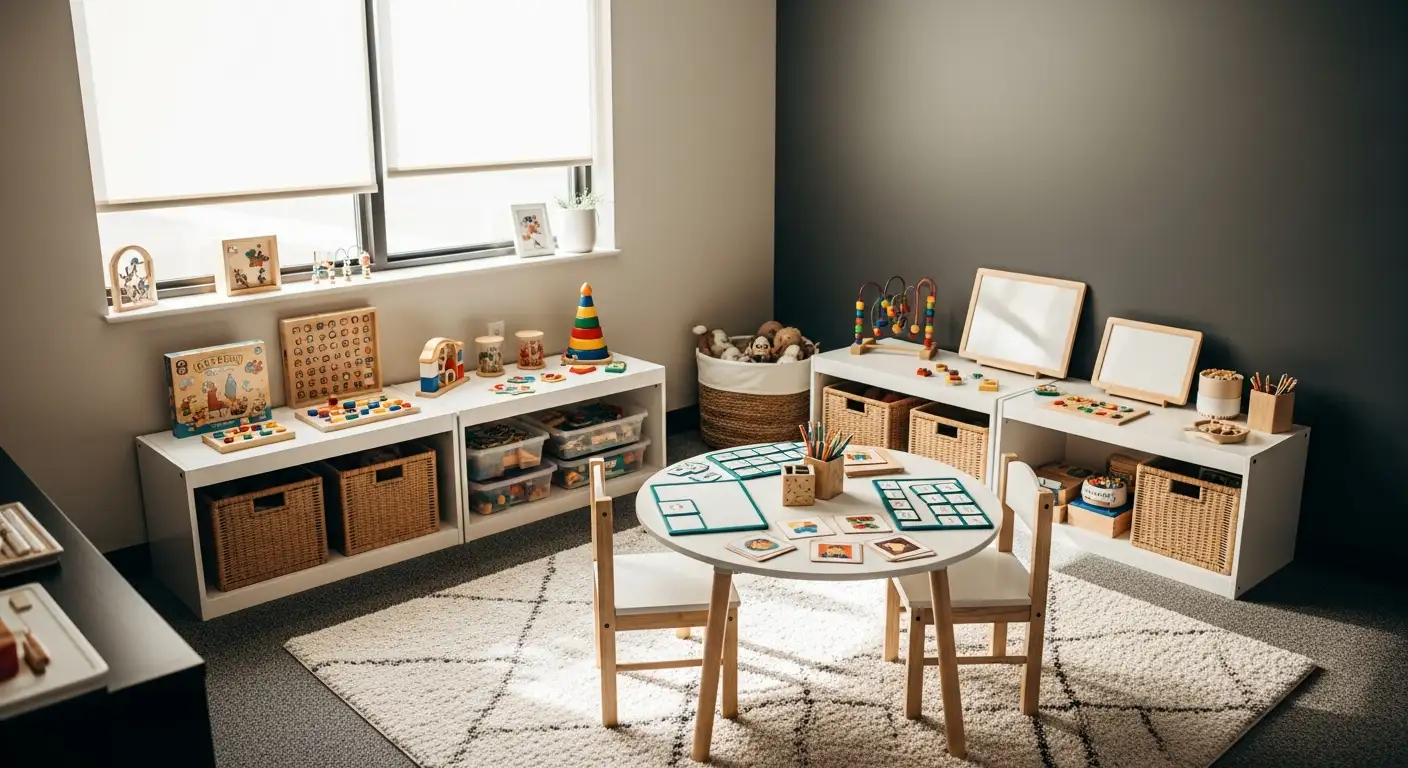The Connection Between Fine Motor Skills and Occupational Therapy


Understanding the Critical Link Between Fine Motor Skills and Occupational Therapy
Fine motor skills are essential for everyday tasks and overall independence. Occupational therapy plays a key role in developing, improving, and maintaining these skills across all age groups. This article explores the vital connection between fine motor skills and occupational therapy, highlighting strategies, assessments, and interventions that facilitate skill mastery and enhance quality of life.
The Significance of Fine Motor Skills in Daily Life
Why are fine motor skills important for independence?
Fine motor skills involve the precise movements of small muscles in the hands and fingers. These skills are essential for everyday activities that require coordination, strength, and dexterity. When children and adults develop strong fine motor skills, they can perform self-care tasks such as buttoning clothes, using utensils, and tying shoelaces more easily. Mastery of these tasks boosts self-esteem and fosters independence. For example, good hand control enables a child to write clearly, participate in arts and crafts, or cut with scissors. For adults, fine motor skills are vital for tasks like typing, cooking, or managing personal grooming.
What activities require fine motor control?
Activities that demand small and deliberate hand movements include writing, drawing, coloring, cutting with scissors, buttoning shirts, manipulating small objects like coins or beads, using tools such as tweezers or pipettes, and playing musical instruments. Play is also a significant context for developing these skills, with activities like building with LEGO, puzzles, or finger painting. Regular engagement in such tasks helps improve precision, speed, and coordination, which are all critical for functional independence.
What are the components such as hand strength, dexterity, and coordination?
Developing fine motor skills involves several component skills:
| Component | Description | Example Activities |
|---|---|---|
| Hand strength | The force generated by hand muscles necessary for grasping and holding objects | Squeezing stress balls, opening jars, cutting paper |
| Dexterity | The skill of performing smooth, controlled movements with fingers | Threading beads, picking up small items with tweezers |
| Hand-eye coordination | The ability to smoothly synchronize visual input with hand movements | Puzzles, catching and throwing balls, drawing within lines |
| Bilateral coordination | Using both hands together but in different roles | Ripping paper, tying shoelaces, building block towers |
| In-hand manipulation | Moving objects around within the hand | Rotating coins, moving puzzle pieces |
| Wrist stability | Maintaining controlled movement and position of the wrist | Writing, cutting along lines, manipulating small tools |
Why is occupational therapy pivotal in fostering fine motor skills?
Occupational therapists play a vital role in assessing and enhancing fine motor capabilities in children and adults. They evaluate hand strength, coordination, and motor planning to identify specific challenges. Based on these assessments, therapists design personalized interventions that incorporate engaging activities like squeezing therapy putty, threading beads, or practicing cutting skills. They also help address sensory processing difficulties that may hinder movement accuracy or coordination.
Therapists work closely with families, teachers, and caregivers to create environments conducive to development. They may recommend adaptive tools, such as larger grips, Velcro® fasteners, or ergonomic utensils, to support individuals with fine motor challenges. Continuous monitoring and adjusting activities ensure progress toward independence. Overall, occupational therapy equips individuals with essential skills to participate confidently in daily routines, academic tasks, and social interactions.
How does developing these skills impact overall functioning?
The development of fine motor skills benefits a wide array of functions beyond simple tasks. Improved hand skills lead to better handwriting, enhanced scissor use, and easier clothing management. These capabilities influence academic success, social interactions, and personal grooming. Children who develop these skills early tend to have higher self-confidence and are more likely to engage in peer activities. For adults, maintaining and improving fine motor control can prevent functional decline caused by health conditions or injury. Strengthening these small muscles supports overall quality of life and independence.
These insights reveal that fine motor skills are a foundation for many aspects of daily living, and targeted occupational therapy interventions are effective in nurturing this vital development.
Components and Progression of Fine Motor Development

What are the main components involved in fine motor development?
Fine motor skills encompass a variety of small, precise movements involving muscles in the hands, fingers, wrists, and even face and feet. These components are crucial for performing daily tasks such as writing, buttoning, or manipulating objects.
Bilateral coordination allows both hands to work together effectively, essential for activities like cutting with scissors or tying shoelaces.
Hand strength is necessary to grasp, hold, and manipulate objects securely. Activities like squeezing sponges or rolling dough help build this strength.
The pincer grasp involves holding objects with thumb and forefinger, fundamental for picking up small items like beads or buttons.
In-hand manipulation refers to adjusting objects within one hand, such as turning a coin or repositioning a pencil.
Arch development of the hand's natural curves improves the ability to pinch and grasp.
Opposition involves touching the thumb to each finger, which is crucial for precise movements.
Wrist stability provides a steady base for fine movements, achieved through activities supporting wrist extension and control.
Finger isolation enables targeted movements of individual fingers, important for tasks like typing or playing musical instruments.
How do these abilities develop over time?
Fine motor skills begin developing well before a child starts school. Early stages include reflex movements, like grasping and reaching, which evolve through trial and error.
As children grow, they refine these skills through age-appropriate activities. For example, infants first grasp objects in a palmar grasp, then progress to pincer grasp by around age 1.
By toddlerhood, children develop hand-eye coordination, improve finger strength, and gain dexterity required for tasks like scribbling or stacking blocks.
Older children refine their in-hand manipulation, arch development, and opposition skills, improving their handwriting, cutting skills, and self-care tasks.
How does occupational therapy support this progression?
Occupational therapists assess each child's current abilities and tailor interventions to foster these components. They incorporate engaging activities such as bead stringing, cutting shapes, buttoning, and squeezing therapy putty.
Therapists work on strengthening muscles, improving coordination, and promoting sensory-motor integration. They also advise parents and educators on activities that support ongoing development.
Overall, fostering these components ensures children develop independence in daily routines and academic skills, promoting confidence and social participation.
| Component | Typical Development Age | Activities to Support Development | Example Tools |
|---|---|---|---|
| Bilateral coordination | 1-3 years | Clapping, building with blocks, playing catch | Clapping games, Lego, stacking cups |
| Hand strength | Birth onward | Squeezing toys, rolling dough | Therapy putty, stress balls |
| Pincer grasp | Around 1 year | Picking small objects, turning pages | Tweezers, small beads |
| In-hand manipulation | 1-5 years | Turning coins, twirling pencils | Coins, small toys |
| Arch development | 2-6 years | Crumpling paper, pinching clay | Playdough, tissue paper |
| Opposition | 1-6 years | Picking up small objects, thumb opposition exercises | Thumb opposition toys |
| Wrist stability | 2-6 years | Coloring, cutting with scissors | Scissors, coloring books |
| Finger isolation | 2-7 years | Puzzles, threading beads | Beads, puzzles |
What is the role of occupational therapy in developing and improving fine motor skills?
Occupational therapy plays a vital role in developing and improving fine motor skills by designing individualized interventions that target specific motor challenges. Therapists utilize activities and exercises to enhance skills such as hand-eye coordination, dexterity, and finger strength, which are essential for performing daily tasks. Through therapeutic techniques like hand strengthening exercises, bilateral coordination activities, and sensory integration, occupational therapists help individuals refine their movements and precision. Furthermore, therapy often incorporates the use of adaptive tools and strategies to promote independence in tasks such as writing, dressing, and self-care. Overall, occupational therapy supports motor skill development to enable individuals to participate confidently and effectively in everyday activities.
Activities and Exercises in Occupational Therapy for Fine Motor Skills
What are some common fine motor skills activities used in occupational therapy for children?
Occupational therapy employs a variety of playful and purposeful activities to help children develop their fine motor skills. Activities such as peeling and placing stickers are popular for improving hand-eye coordination and finger dexterity. Stringing Cheerios or beads aids in strengthening the pincer grasp and enhancing precision in finger movements.
Another effective activity is ripping or crumpling paper, which helps build hand strength and coordination. Therapists also incorporate tasks like attaching clothespins, using sidewalk chalk for drawing, and threading or lacing beads to promote bilateral hand coordination and overall fine motor control.
Practical, real-life tasks are integrated into therapy through activities like placing coins into a piggy bank or sorting small objects. These tasks foster grasping, pinching, and in-hand manipulation skills.
All these activities are designed to be engaging, adaptable, and aligned with a child's interests. The goal is to make skill development fun and functional, promoting improvements in daily activities such as writing, dressing, and self-care.
Supporting Children in Overcoming Fine Motor Challenges

How can occupational therapy support children in overcoming challenges related to fine motor skills?
Occupational therapy offers essential support for children facing difficulties with fine motor skills by delivering customized, engaging interventions tailored to each child's unique needs. Therapists focus on strengthening small muscles in the hands, improving coordination, and enhancing dexterity to help children perform daily activities more independently.
Therapists employ a variety of play-based activities, which serve as therapeutic exercises. These include using manipulative toys like beads, coins, and pegboards, practicing cutting with scissors, tracing shapes, and performing activities like threading and stacking blocks. Such activities help refine the small muscle movements necessary for tasks like writing, buttoning shirts, using utensils, and cutting with scissors.
A critical aspect of therapy involves sensory integration techniques. These methods help children improve tactile perception and motor control by engaging the senses through activities like playing with textured materials, squeezing therapy putty, or completing tasks that require different sensory inputs. This multisensory approach not only enhances muscle coordination but also improves the child's overall sensory processing, which plays a role in fine motor execution.
In addition to targeted activities, occupational therapists conduct comprehensive assessments, including standardized tests, to identify individual strengths and challenges. Based on these evaluations, they develop personalized treatment plans that gradually increase in difficulty, promoting skill mastery and confidence.
Parental involvement is encouraged, with therapists providing guidance on simple exercises and activities that can be practiced at home. Examples include playing with playdough, practicing buttoning, tying shoelaces, and using adaptive tools like enlarged utensils or gripping aids. This consistent practice outside of therapy enhances skill acquisition and reinforces progress.
Through regular monitoring, therapists observe improvements in hand strength, coordination, and task performance. When necessary, they recommend adaptive equipment—such as ergonomic scissors, special grips, or writing aids—to facilitate better control and independence.
In essence, occupational therapy equips children with the necessary skills to overcome fine motor challenges, enabling greater participation in school, play, and daily self-care activities. The focus on individualized, playful, and sensory-rich interventions ensures that children develop their fine motor abilities in a supportive and motivating environment.
Goals and Outcomes in Fine Motor Skills Therapy

What goals are typically targeted in occupational therapy for improving fine motor skills?
In occupational therapy dedicated to refining fine motor skills, therapists focus on several important objectives. One of the primary goals is improving finger and hand strength. Stronger muscles allow for better grip, easier manipulation of objects, and overall increased control during daily activities.
Enhancing dexterity and precision is another vital focus. This includes aiding individuals in performing delicate tasks such as buttoning shirts, writing neatly, and cutting along lines confidently. Developing eye-hand coordination is also essential, as it supports the ability to aim, guide movements, and carry out tasks smoothly.
Supporting bilateral coordination involves enabling the effective use of both hands simultaneously, which is crucial for activities like tying shoelaces, opening jars, or dressing.
Ultimately, these targeted goals work together to promote independence and efficiency in everyday routines. Successful therapy results in improved ability to manage self-care tasks, participate in academic activities, and engage confidently in recreational pursuits, thus improving overall quality of life.
Activities for Adults to Maintain Fine Motor Skills
 Maintaining fine motor skills is essential for daily independence and overall hand health, especially as adults age or recover from injury. There are various targeted activities adults can incorporate into their routines to keep their small muscle movements precise and strong.
Maintaining fine motor skills is essential for daily independence and overall hand health, especially as adults age or recover from injury. There are various targeted activities adults can incorporate into their routines to keep their small muscle movements precise and strong.
Manipulating small objects is a practical way to improve control and dexterity. This can include threading beads to make jewelry, using tweezers or clothespins to pick up tiny items, or practicing with coins and buttons. These tasks enhance fine motor coordination and strengthen hand muscles.
Engaging in arts and crafts activities also offers beneficial exercises for fine motor development. Activities such as origami, painting, sculpture with salt dough, and paper cutting not only stimulate creativity but also improve hand-eye coordination and manual dexterity.
Performing everyday functional tasks helps preserve important skills. Adults can practice buttoning shirts, zipping jackets, using utensils like forks and knives, opening jars, or sorting small objects like coins or pills. These activities simulate real-life demands and reinforce muscle memory.
Exercises like squeezing stress balls, using therapy putty, and manipulating small items like clay or modeling dough are excellent for developing hand strength and motor precision. These activities can be easily integrated into daily routines or used therapeutically to address specific deficits.
In addition to these, incorporating purposeful daily routines such as turning pages, opening packages, and assembling small kits can make a significant difference.
Regular practice of these activities not only supports the maintenance of fine motor skills but also helps prevent decline related to aging or health conditions. Consistent and engaging exercises encourage independence and enhance overall hand function.
Most recommended activities for adults include:
- Manipulating small objects like beads or coins
- Arts and crafts like origami and painting
- Functional tasks such as buttoning, zipping, and utensil use
- Squeezing therapy balls and working with therapy putty
- Incorporating these exercises into daily routines
Addressing Conditions Affecting Fine Motor Skills

What conditions can affect fine motor skills, and how can occupational therapy help?
Fine motor skills can be impacted by a variety of neurological, developmental, and physical conditions. In children, developmental disorders such as autism spectrum disorder, cerebral palsy, Down syndrome, and general developmental delays often present challenges in coordination and muscle control needed for tasks like handwriting, dressing, and manipulating small objects.
In adults, neurological conditions like stroke, multiple sclerosis (MS), Parkinson's disease, and muscular dystrophy can weaken muscles and impair nerve function, leading to decreased dexterity and coordination. Injuries such as fractures, sprains, or nerve damage can also temporarily or permanently disrupt fine motor abilities.
Several conditions, whether in children or adults, may cause deterioration or difficulty in achieving motor control. For example, degenerative diseases like MS or Parkinson's gradually impair muscle strength and coordination, affecting everyday activities.
Occupational therapy plays a crucial role in addressing these challenges. Therapists conduct thorough assessments to identify specific deficits and tailor interventions accordingly.
Interventions include various strategies:
- Therapeutic activities: Engaging in functional tasks that target improving grasp, pinching, and in-hand manipulation.
- Sensory integration: Helping patients process sensory information better to improve coordination.
- Strengthening exercises: Using tools like therapy putty, squeezing balls, or resistance exercises to boost muscle power.
- Adaptive strategies and equipment: Recommending tools such as larger grips, specialized utensils, or modified clothing fasteners to support independence.
These interventions aim to enhance coordination, increase muscle strength, and improve dexterity. The overarching goal is to support individuals in performing daily tasks effectively, thereby improving their participation in routines, boosting confidence, and fostering independence.
Through consistent therapy and support, many individuals can regain or develop their fine motor skills, significantly impacting their quality of life and ability to function autonomously in daily activities.
Empowering Through Fine Motor Skill Development
The development and enhancement of fine motor skills are fundamental to achieving independence and participation in daily life. Occupational therapy provides targeted, engaging, and customized interventions to address challenges and foster skill mastery. By focusing on strengthening small muscle movements, improving coordination, and incorporating adaptive strategies, therapists help individuals of all ages realize their potential for self-sufficiency. Supporting fine motor development is not only about improving motor control but also about boosting confidence, social participation, and overall quality of life. Emphasizing early intervention, continued practice, and collaborative efforts among therapists, families, and educators ensures meaningful progress and empowers individuals to confidently navigate their environments.
References
- The OT's Guide to Fine Motor Skills - The OT Toolbox
- The Importance of Fine Motor Skills for Children | OTHC
- The Role of OT in Developing Fine Motor Skills - Sasco River Center
- OT and Fine Motor Skills Development - Way to Grow
- Fine Motor Skill Development Through Occupational Therapy
- Fine Motor Skills: What They Are, Development & Examples
- Effects of occupational therapy services on fine motor and functional ...
- Fine Motor Skills Defined by an Occupational Therapist - NAPA Center
Recent articles

Expressive Speech Delay 2-Year-Old
Understanding and Addressing Expressive Speech Delay in Toddlers

How Speech Recognition Works
Unlocking the Power of Speech Recognition in Therapy and Healthcare

Autism and Head Size
Understanding the Complex Relationship Between Autism and Head Size

Occupational Therapy in Autism
Enhancing Independence and Quality of Life Through Occupational Therapy in Autism

Do Autistic People Understand Sarcasm?
Navigating the Nuances: Understanding Sarcasm and Social Communication in Autism

Autism Routines
Crafting Effective Daily Structures for Children with Autism

